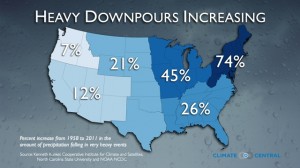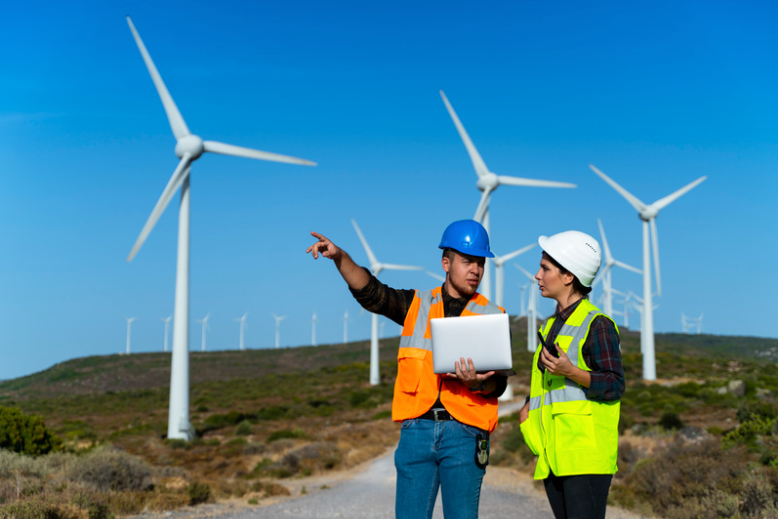Climate change and Colorado floods: The elephant in the room
Reb Anderson
|September 18, 2013

Boulder High fields
There have been many words to describe the flooding in Colorado over the past week: horrific, catastrophic, unprecedented and biblical are some.
To illustrate the scale of the disaster, some numbers:
– Over 18” of rain have fallen in the Boulder area since last Wednesday.
– 7-11” of rain fell during a single 24-hour period.
– From north to south, 200 miles of Colorado were hit.
– 17 counties were affected.
– 30 bridges were destroyed.
– Over 1500 homes were destroyed and 18,000 damaged.
– Over 11,000 people were evacuated.
– Over 600 people still missing and
– 8 people confirmed dead.
The flooding has been classified as a 1000-year event, meaning there was only a tenth of one percent probability (0.1%) that it would happen in a given year. When an event this unusual and extreme happens these days, one of the first questions people ask is:
“Was it because of climate change?”
Here’s my answer:
It’s not a question of IF it was caused by climate change. It’s only a question of HOW MUCH it was caused by climate change.
 Climate change could have been a significant factor or only a small contributor, but there’s no way it wasn’t involved. With 40% more CO2 in the atmosphere than in pre-industrial times and 4% more water vapor in the atmosphere than 40 years ago, our world is fundamentally altered. There’s no control group to compare us to – we are all living this experiment.
Climate change could have been a significant factor or only a small contributor, but there’s no way it wasn’t involved. With 40% more CO2 in the atmosphere than in pre-industrial times and 4% more water vapor in the atmosphere than 40 years ago, our world is fundamentally altered. There’s no control group to compare us to – we are all living this experiment.
A helpful analogy is to say that climate change puts weather on steroids – it makes the big events even bigger. And the attribution is similar as well: If a baseball player is caught on steroids, we don’t ask if it was the steroids that made him hit that particular home run. But it does make all his statistics suspect. In the same way, climate change makes a catastrophe like this suspect to questioning.
There are ways to go back in and run forensics on this event to determine just how large a role climate change played. To do this, scientists ask: What are the chances that this event could occur in a world without 40% extra CO2 put in the atmosphere by people? But to do this, scientists need computer models and time. Many of these scientists work at one of the major climate modeling centers, the National Center for Atmospheric Research (NCAR), in Boulder and were themselves affected by the flooding.
One thing we do know is that, according to the January draft of the National Climate Assessment, heavy downpours have already been increasing across the country and are expected to increase both in intensity and frequency in the future. So an extreme downpour like this fits with that picture.
Colorado, however, is on the border between the desert Southwest, which is expected get drier from climate change and the northern states that are supposed to get wetter. Instead of making the state less impacted by climate change, however, it’s been the opposite. Colorado has been getting the worst of both worlds: drought and wildfires plus flooding.
How? More heat in the atmosphere means evaporation and drought, while at the same time warm air holds more moisture and makes individual storm events worse. This means that Colorado can still be experiencing drought conditions, but get hit by a major storm at the same time.
In some ways, drought and wildfire damage can make a flood like this worse, by removing trees whose roots soak up water and parching soil, so that it’s too dry to absorb runoff. In this case, those factors may have worsened the flooding, but the more than half a year’s worth of rain that fell was plenty to do the damage on its own.
My heart goes out to all those affected by this event, especially those in Boulder and Estes Park, two places I have lived and still consider a home. In the midst of this tragedy, let’s not forget about the larger context of a heated-up world that this happened in.
Climate change is that elephant in the room. If we’re going to deal with him, we have to start by at least acknowledging that he’s there.
Join our Youth Action Network
More Blog Posts
Crafting a Vision for the Future: My Experience at LCOY USA 2024
Dry and sunny Tempe, Arizona where temperatures have been over 100 F for 113 consecutive days, delegates gathered to attend …
Read More
7 Ways to Weatherproof Your Home on the Cheap (+1 Not-So-Cheap)
As colder weather sets in, understanding how to weatherproof your home is key to maintaining warmth and reducing energy costs. …
Read More
7 Myths About Windmills Debunked
Windmills, or wind turbines, have been a hot topic of discussion, especially as renewable energy sources gain traction. However, there …
Read More